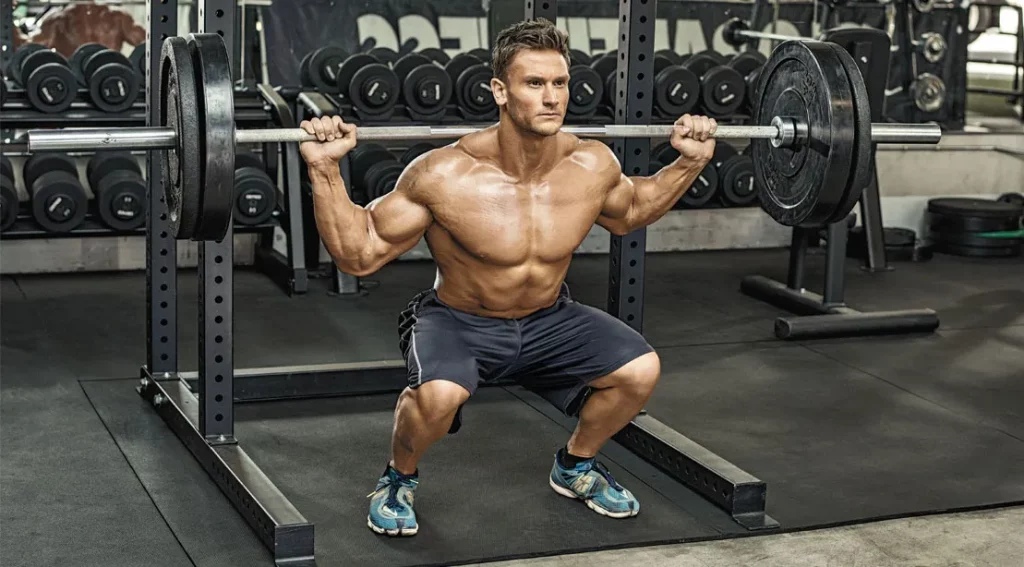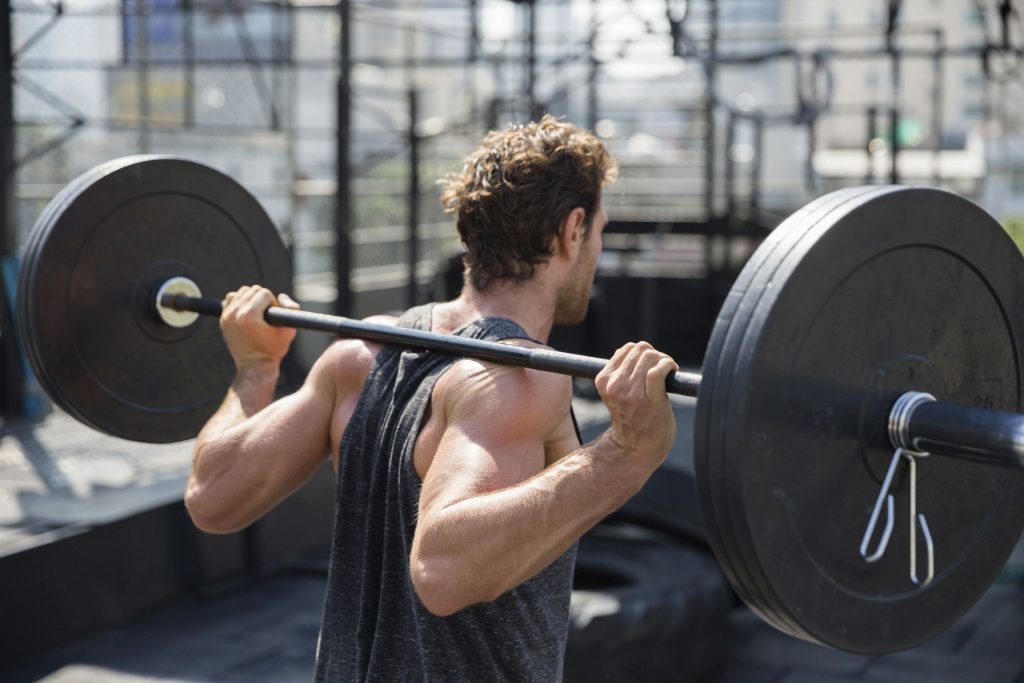You’ve been hitting the gym consistently, but your muscle growth has stalled. Maybe you’re spending hours doing endless bicep curls, tricep extensions, and calf raises, wondering why you’re not seeing the dramatic changes you expected. Here’s the truth that might surprise you: those isolation exercises, while they have their place, aren’t the secret to building serious muscle mass.
The real game-changers are compound exercises – movements that work multiple muscle groups simultaneously and deliver the biggest bang for your buck. If you want to maximize muscle growth while minimizing time in the gym, compound exercises are your ticket to transformation.
Why Compound Exercises Dominate for Muscle Growth
Let’s cut through the fitness industry noise and focus on what actually works. Compound exercises trigger more muscle fibers, create greater hormonal responses, and allow you to lift heavier weights than isolation movements. When you perform a squat, you’re not just working your quads – you’re engaging your glutes, hamstrings, core, and even your upper body for stability.
This multi-muscle activation leads to several key benefits that isolation exercises simply can’t match. First, you’ll burn more calories during and after your workout due to the increased energy demands. Second, the hormonal response – particularly growth hormone and testosterone release – is significantly higher with compound movements. Finally, the functional strength you build translates directly to real-world activities and athletic performance.
The time efficiency factor alone should make compound exercises appealing to anyone with a busy schedule. Instead of spending 20 minutes targeting individual muscles, you can work your entire body effectively in the same timeframe with strategic compound movements.
The Big Three: Foundation Movements for Maximum Growth
These three exercises form the cornerstone of any serious muscle-building program. Master these, and you’ll have the foundation for incredible strength and size gains.
The Squat: The King of Lower Body Development
Nothing builds lower body mass like the squat. This movement targets your quadriceps, glutes, hamstrings, and core while also strengthening your entire posterior chain. The squat forces your body to work as a unified system, creating stability and coordination that carries over to every other exercise you perform.
The key to effective squatting isn’t just going heavy – it’s maintaining proper form while progressively increasing load over time. Focus on sitting back into your hips, keeping your chest up, and driving through your heels. Your knees should track over your toes, and you should descend until your hip crease is just below your knee cap.
Start with bodyweight squats to master the movement pattern, then progress to goblet squats with a dumbbell, and eventually to barbell back squats. The beauty of squats is that there’s always a variation that matches your current fitness level and available equipment.
The Deadlift: Total Body Power Builder
If the squat is the king of lower body exercises, the deadlift is the emperor of total body strength. This movement engages more muscles simultaneously than any other exercise, working your entire posterior chain, core, forearms, and upper back.
The deadlift teaches your body to generate power from the ground up, which is exactly how real-world strength works. Whether you’re lifting boxes, picking up your kids, or moving furniture, you’re essentially performing a deadlift variation.
Proper deadlift form starts with the bar over the middle of your feet, your shoulders directly over the bar, and your spine in a neutral position. Drive through your heels and think about pushing the floor away rather than pulling the weight up. Your hips and shoulders should rise at the same rate, and the bar should stay close to your body throughout the movement.
The Pull-Up/Chin-Up: Upper Body Mass Builder
While push-ups get most of the attention for bodyweight exercises, pull-ups and chin-ups are far superior for building upper body mass. These movements target your lats, rhomboids, middle traps, rear delts, and biceps while also engaging your core for stability.
The difference between pull-ups and chin-ups lies in grip position and muscle emphasis. Pull-ups use an overhand grip and emphasize the lats and upper back, while chin-ups use an underhand grip and involve more bicep activation. Both variations are valuable and should be included in your routine.
If you can’t perform bodyweight pull-ups yet, use resistance bands for assistance or start with negative repetitions (jumping up and lowering yourself slowly). As you get stronger, you can add weight with a dip belt or weighted vest.

Essential Upper Body Compound Movements
Your upper body needs compound movements just as much as your lower body. These exercises build functional strength while creating the broad shoulders and thick back that define an impressive physique.
The Push-Up and Its Progressions
Don’t dismiss push-ups as a beginner exercise. This movement is incredibly versatile and can be progressed to challenge even advanced trainees. Standard push-ups work your chest, shoulders, triceps, and core, but variations can shift emphasis and increase difficulty.
Start with standard push-ups, ensuring your body forms a straight line from head to heels. Your hands should be slightly wider than shoulder-width, and you should lower yourself until your chest nearly touches the ground. Progress to decline push-ups (feet elevated), diamond push-ups (hands forming a diamond shape), or single-arm push-ups as you get stronger.
The key is maintaining perfect form throughout the full range of motion. Poor form not only reduces the exercise’s effectiveness but also increases injury risk.
Overhead Press: Shoulder and Core Developer
The overhead press builds impressive shoulder development while strengthening your entire core. This movement requires significant stability and coordination, making it one of the most functional upper body exercises you can perform.
Whether you use a barbell, dumbbells, or kettlebells, the overhead press challenges your shoulders, triceps, and core simultaneously. The standing version is superior to seated pressing because it requires more core engagement and teaches your body to transfer force from the ground through your entire kinetic chain.
Start the movement with the weight at shoulder level, engage your core, and press straight up while keeping your ribs down. Your head should move slightly forward as the weight passes your face, and you should finish with the weight directly over your shoulders.
Rowing Variations: Building a Thick Back
Rows are the perfect complement to pressing movements and are essential for balanced muscle development. Whether you choose barbell rows, dumbbell rows, or cable rows, this movement pattern builds thickness in your lats, rhomboids, and middle traps while strengthening your rear delts.
The key to effective rowing is leading with your elbows and squeezing your shoulder blades together at the top of the movement. Your torso should remain stable throughout the movement, and you should feel the muscles between your shoulder blades working hard.
Lower Body Powerhouses Beyond the Squat
While squats are fantastic, your lower body needs variety to reach its full potential. These compound movements target your legs and glutes from different angles and movement patterns.
The Hip Hinge: Deadlifts and Variations
Beyond the conventional deadlift, hip hinge patterns include Romanian deadlifts, sumo deadlifts, and single-leg deadlifts. Each variation emphasizes different aspects of posterior chain development while teaching proper hip movement patterns.
Romanian deadlifts focus more on the hamstrings and glutes, making them excellent for building size in these areas. The movement starts from the top position, and you lower the weight by pushing your hips back while maintaining a slight bend in your knees.
Single-leg deadlifts add a balance and stability component while addressing any strength imbalances between sides. These are particularly valuable for athletes and anyone wanting to improve functional movement patterns.
Lunges: Unilateral Strength and Stability
Lunges work one leg at a time, forcing each side to work independently and addressing strength imbalances that bilateral movements might miss. This exercise targets your quads, glutes, and hamstrings while challenging your balance and coordination.
Forward lunges emphasize the quads, while reverse lunges are slightly more glute-dominant. Walking lunges add a dynamic component and increase the cardiovascular challenge. Regardless of the variation you choose, focus on keeping your torso upright and lowering your back knee toward the ground.
Programming Compound Exercises for Maximum Growth
Having the best exercises means nothing without proper programming. The key to muscle growth lies in progressive overload – gradually increasing the demands on your muscles over time.
Frequency and Volume
Most compound exercises can and should be performed 2-3 times per week. This frequency allows for adequate recovery while providing enough stimulus for growth. Your total weekly volume should include 10-20 sets per major muscle group, with compound exercises forming the foundation of this volume.
Start with lower volumes and gradually increase as your work capacity improves. It’s better to do too little and progress steadily than to do too much and burn out or get injured.
Rep Ranges for Growth
While any rep range can contribute to muscle growth, the 6-12 rep range tends to be most effective for hypertrophy. This range allows you to use challenging weights while accumulating enough volume to stimulate growth.
However, don’t neglect other rep ranges entirely. Lower reps (3-5) build strength that allows you to handle heavier weights in your hypertrophy work, while higher reps (12-20) can add training volume and improve muscular endurance.
Progressive Overload Strategies
Progressive overload doesn’t just mean adding weight to the bar, although that’s the most straightforward method. You can also increase volume by adding sets or reps, improve your range of motion, or slow down the tempo of your repetitions.
Track your workouts to ensure you’re consistently progressing. Small improvements each week compound into significant changes over time.

Common Mistakes That Limit Growth
Even with the best exercises, certain mistakes can sabotage your progress. Avoiding these pitfalls will accelerate your results and keep you injury-free.
Ego Lifting Over Proper Form
Your muscles don’t know how much weight is on the bar – they only know tension, time under tension, and the quality of the stimulus you provide. Lifting weights that are too heavy with poor form reduces muscle activation and increases injury risk.
Perfect your form with lighter weights before progressing to heavier loads. Quality repetitions with moderate weight will always outperform sloppy reps with heavy weight.
Neglecting the Mind-Muscle Connection
Compound exercises work multiple muscles, but that doesn’t mean you should just move weight from point A to point B. Focus on feeling the target muscles working throughout each repetition. This conscious muscle activation enhances the training stimulus and improves results.
Inconsistent Training
Muscle growth requires consistent stimulus over time. Training hard for two weeks then taking a week off won’t produce the results you want. Aim for consistency over perfection – showing up regularly with moderate effort beats sporadic intense sessions.
Building Your Compound Exercise Foundation
Start with mastering the movement patterns before worrying about heavy weights or complex programming. Spend time learning proper form for each exercise, and don’t hesitate to work with a qualified trainer initially to ensure you’re moving correctly.
Begin each workout with your most demanding compound exercises when your energy and focus are highest. These movements require the most coordination and effort, so tackle them early in your session.
Remember, muscle growth is a marathon, not a sprint. The compound exercises outlined here have built impressive physiques for decades, and they’ll continue to do so long into the future. Stay consistent, focus on progressive overload, and trust the process. Your future self will thank you for building this solid foundation of functional strength and muscle mass.
